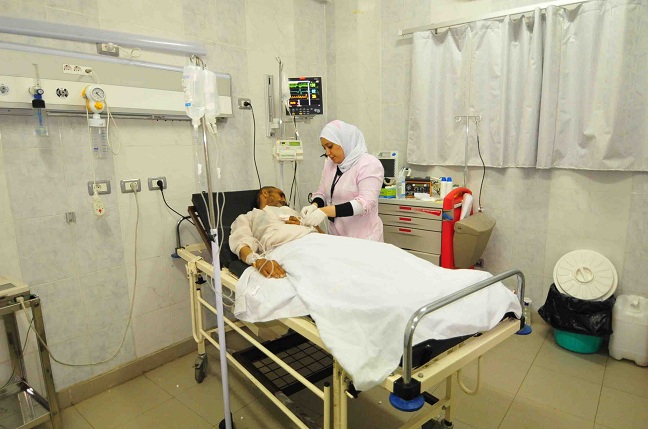By Amr Ramadan
Egypt’s economy has been on target in 2010 with steady growth rates, increasing foreign direct investment and inflation relatively reigned in, factors which were buoyed by high levels of domestic consumption, enduring investor confidence and stable prices — save for seasonal peaks and troughs.
Continuing the 2009 trend, domestic demand was largely driven by higher consumption, which figures show was one of the main growth factors.
“Private consumption has picked up, leading public consumption, starting from quarter two of 2009/10. This could boost investor confidence next year leading to higher growth,” said Magda Kandil, director of the Egyptian Center for Economic Studies.
Officials acknowledged earlier in the year that relying only on domestic consumption would not be enough. “We are at a juncture where the world economy is now important to us, we are no longer isolated from the outside world,” said Minister of Finance Youssef Boutros-Ghali at the Euromoney conference in September.
The minister explained that even though its relative isolation carried the economy through the crisis unscathed, Egypt’s future growth would depend more than ever on the fate of the global market.
Kandil’s concurred, saying, “Monetary policy is currently neutral in an effort to preserve the growth momentum and the depreciation of the exchange rate could be a factor to boost exports, provided growth prospects are improved for major trading partners.”
Egypt achieved a 5.1 percent growth rate for the fiscal year ending June 2010, while Finance Minister Youssef Boutros-Ghali expects growth of 6 percent by June and 7 percent the following year.
This year’s number was up from last year’s 4.7 percent, which, though down from pre-crisis levels of 7 percent, was still above expectations.
According to Business Monitor International, the Egyptian economy “continues to be a relative outperformer in the Middle East and North Africa,” which is a trend they broadly expect to continue through the end of their five-year forecast.
“Growth has rebound in response to improved exports, remittances and FDI, which resulted in the improvement of investor confidence that could drive private sector activity forward,” said Kandil.
“That quarter four growth came in at a still healthy 5.4 percent through April-June of 2010, [which] underscores the extent to which the economy has continued to shake off the looming headwinds threatening to temporarily derail the country’s convergence process,” BMI explains in their “Business Outlook for Q1 2011.”
According to BMI, the most important performance in 2010 came from the construction sector, which expanded 11.9 percent year-on-year, adding to the 14.4 percent growth that took place the same period last year, which highlighted the extent of fixed investment activity taking place at the moment.
“The communications sector also experienced robust growth, expanding 15.3 percent year-on-year in quarter four, while the 12.1 percent expansion in the restaurant and hotels industry underscores the recovery taking place throughout the tourism sector,” the outlook continues.
FDI inflows, as well as being crucial for these sectors, continue to drive overall growth. While pre-crisis, Egypt attracted LE 13 billion, that leveled off to around LE 7 billion this year.
“We need to increase this back to where it was before and we need to make sure that we have enough domestic demand, confidence and investment to sustain this growth rate,” Ghali said in a statement.
According to the finance ministry’s economic monitor, during the fiscal year 2009/10, FDI in Egypt achieved a net inflow of $6.76 billion, as net greenfield investments posted $3.2 billion (against $2.7 billion), while net investments in the oil sector posted $3.6 billion.
This inflow came in above the estimates of investment firm CI Capital of LE 5.9 billion as the fall was reduced to 16.7 percent — an improvement over the 38.7 percent decline seen in fiscal year 2008/09.
“The strong 40.9 percent year-on-year growth seen in the third quarter of 2009/10 outweighed a weak performance for most of the rest of the year. A 42 percent quarter-on-quarter growth in the fourth quarter of 2009/10 also confirms the improvement in investor confidence,” said CI capital in their yearly review.
Reigning in inflation
The positive performances in FDI and GDP growth were complemented by decreasing inflation in 2010 compared to 2009, but that could change going forward.
“The pickup in economic activity could increase inflationary pressure. Hence, we project stronger growth and higher inflation in 2011,” Kandil commented.
The Ministry of Finance said that the latest figures indicate that the recent pick up in consumption demand has put pressure on prices of foodstuffs over the year, but headline inflation has relaxed.
Inflation rates decreased to reach 11.7 percent at the end of the fiscal year 2009/10 compared to 16.2 percent at the end of the fiscal year 2008/09. Headline CPI in August 2010 decreased to 11.5 percent and fell to 10.2 percent in November, its lowest in 15 months.
Lower inflation led the central bank to keep its key overnight interest rates steady for the 10th time since September 2009, with overnight lending rates at 9.75 percent and deposit rates at 8.25 percent.
During the month of Ramadan, prices of various food items increased. Meat and poultry prices skyrocketed, followed by a rise in the price of tomatoes, sugar and other basic commodities, fueling the argument that the Egyptian populace has yet to feel the impact of the government’s positive fiscal performance.
Unemployment has risen since the onset of the global financial crisis, from 8.8 percent in fiscal year 2007/08 to 9 percent the following year and then 9.2 percent in fiscal year 2009/10.
An economic risk assessment by BMI concludes that “unemployment is high, which subdues demand. Egypt has a widening fiscal deficit owing to a surging subsidies bill and rising public wage costs. There are relatively high levels of corruption and bureaucracy a growing informal sector.”
Despite ongoing reforms and impressive growth figures, the argument is still made that the benefits of these is yet to reach the majority of the population.









